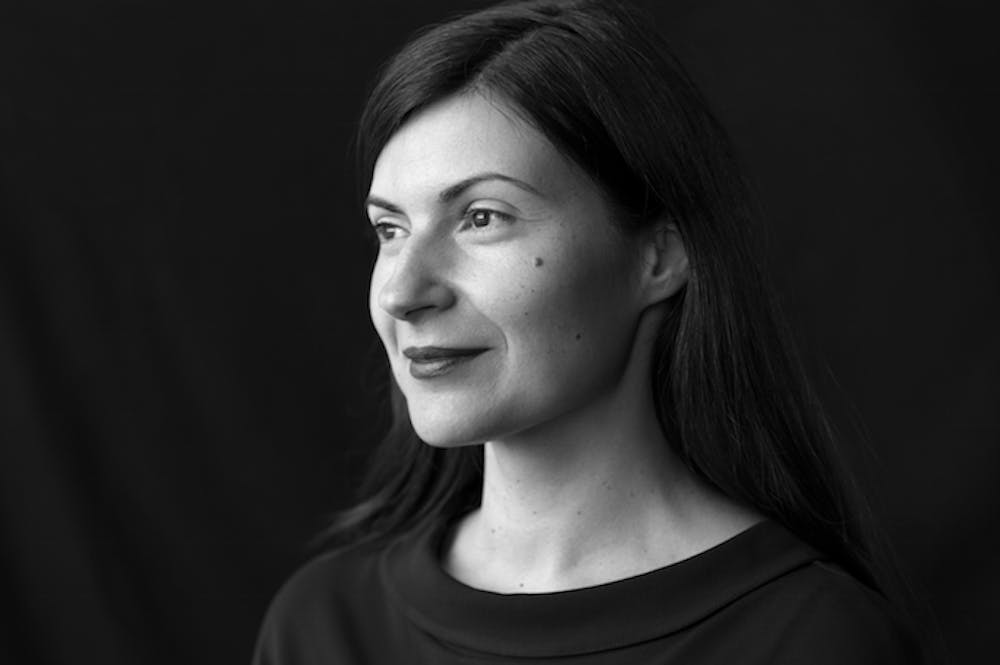Mona Awad MFA ’14 was working at a bookstore when she decided to apply to Brown’s selective Literary Arts MFA program. At that point, she had already completed a master’s degree in English literature with a focus on fairytales at the University of Edinburgh. She tried to write between shifts, but found she did not have enough time to dedicate to her craft. “I just applied to Brown and to one other school, and I got into Brown, so I went to Brown,” she said.
Her experience at the University colors the backdrop for Awad’s 2019 novel “Bunny” which was listed as a best book of 2019 by Time, The New York Public Library and Vogue, among others. Awad describes the book as broadly literary fiction and specifically fairytale horror.
“Bunny” focuses on Samantha Heather Mackey, a troubled MFA student at the fictional Warren University, an elite New England institution. A prestigious art school borders Warren’s campus, and the surrounding, unnamed city features streets with names like “Friendship.” Sound familiar? It should. “Of course, being at Brown inspired Warren,” Awad told The Herald.
Awad means this as a compliment, mostly. “Bunny” follows Mackey as the close quarters of her MFA program push her to interact with “the Bunnies,” a group of four, hyper-feminine, extremely annoying MFA students who all refer to each other as Bunny. Mackey stays on the periphery of this group except for their weekly workshops, where she stays quiet while the Bunnies heap praise onto each other’s uncreatively experimental works. There is a perpetual chorus of Bunny-isms in the book, from the cutesy — “just because you’re so amazing, Bunny,” — to the pretentious — “it’s just always so interesting how you engage with the Body” — to the loving — “Bunny, I love you.”
Despite her hatred for them, Mackey is invited to the Bunnies’ “smut salon,” as they call it. From there, what began as a classic, literary fiction novel dives into full fairytale horror with cultish seances, exploding animals, ax murderers and more. All of this revolves around Warren’s campus and its imagined city, the plot weaving in and out of workshops, university events and various Providence-esque locales.
“Brown is this really incredible, breathtaking institution in the midst of this creepy … and gorgeous city,” Awad said. “That felt like the perfect setting for a horror novel.” Combining the “classic gothic setting of the city” and the “pastel element” of an elite university is what “Bunny” is about: balancing the cute with the horrific and exploring one becoming the other.
“To me, the ultimate monster is this really adorable creature who’s speaking in a really soft tone about how amazing I am,” Awad said. The Bunnies all wear fluffy dresses, they eat “mini food,” they are caught in a perpetual hug. They are also murderers, cult leaders and nightmarish ghouls. For Awad, the MFA program is the space that can encompass these polarities. “I left (my MFA program at Brown) and I remember thinking, definitely the experience of getting an MFA is a lot like a horror novel … But there are also magical qualities to it, like fairytale qualities. It’s kind of a dream come true to go somewhere for two years and write, right?”
Awad said her time at Brown was “great,” and credits the institution with giving her more time to write than any other program since (she received her Ph.D. from the University of Denver in 2018, which was where she would eventually produce “Bunny”). Her first novel, “Thirteen Ways of Looking at a Fat Girl,” was her thesis at Brown, and she sold it soon after graduation.
“I will say this: My MFA was a trip, it was definitely a trip. But it was a good trip,” Awad remembered. “I was being asked — we all were, we’re all artists — to be imaginative and to show the results of that and that was really scary.” She drew from the “feeling of being vulnerable, the feeling of being unsettled, the feeling of being isolated” for Mackey’s strong character and consciousness in “Bunny.”
Trippy or not, Awad asks that you read “Bunny” literally: “There really are bunnies, there really are beheadings, people really do explode,” she said. Combining the fairytale horror genre with some aspects of experimental fiction — a nod to her time in a remarkably avant-garde MFA program — Awad is able to turn a “campy” form “informed by teen movies in the 80s and 90s” into something greater: an artistic quest, a murderous bildungsroman.
Awad’s novel “is a story about someone discovering their voice, about someone discovering their creativity,” she said. The MFA program is, after all, about finding that personal voice. “In my 20s, I was just writing like everybody else,” Awad said — only through “trial and error” did she find the distinctive style that characterizes her work today. “It’s all about finding your source, the things that light you up creatively,” she said.
For Mackey, that was entering and escaping the Bunny cult. For others, it may look a little different.





